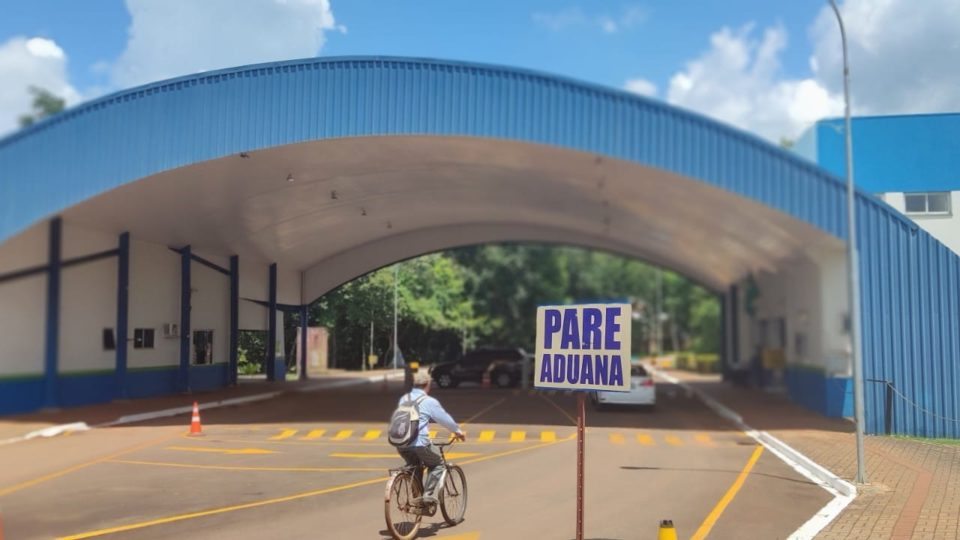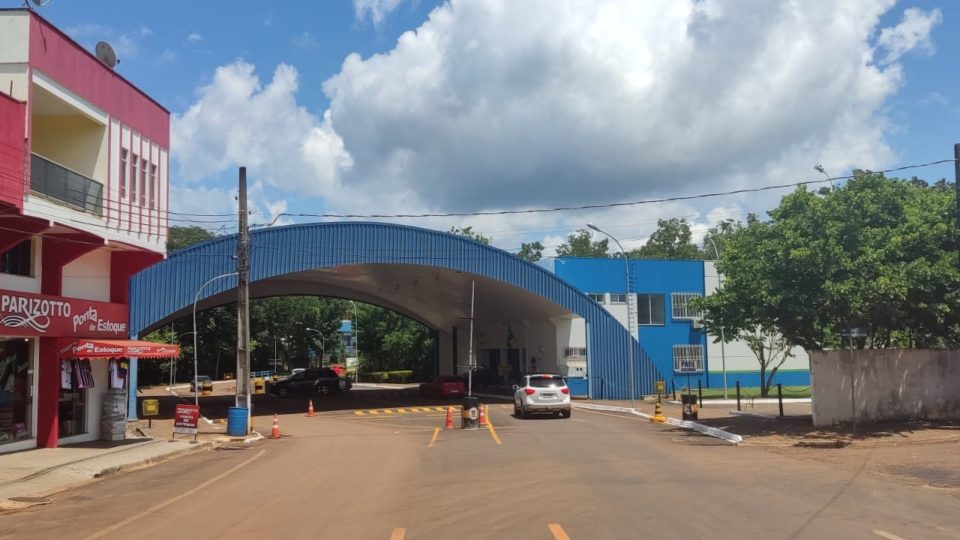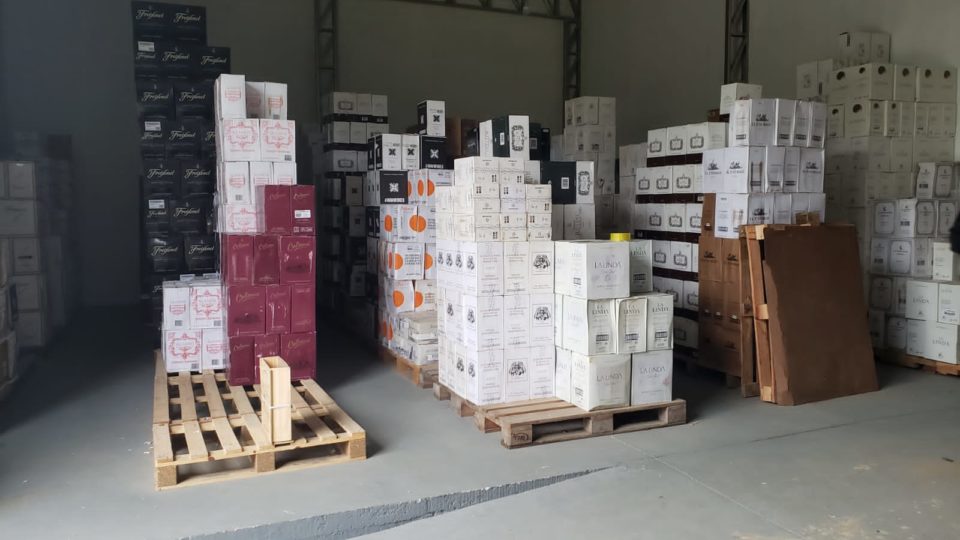By Juliet Manfrin
Of the 1,200 kilometers of border between Brazil and Argentina, a small stretch, less than 30 kilometers long, between the municipalities of Dionisio Cerqueira, Santa Catarina (SC), and Santo Antônio do Sudoeste, Paraná (PR), has been a very specific target of the police forces.
This border is being considered the new beacon for organized crime in wine smuggling, with the main gateway for the illegal product sold in Brazil, mainly to the South and Southeast regions.
“In the last five years, we have registered an important movement of this type of smuggling; with the pandemic, this became more accentuated. People started to drink more. With the borders closed for months, it became easier to transport illegal products from Argentina to Brazil,” says the chief of the Federal Police (PF) in Cascavel, in western Paraná, Marco Smith.

The police station he commands is about 150 kilometers from the border between the western and southwestern regions of the state, where part of the municipalities in the most vulnerable stretch are located.
“Before, we used to seize cars with trunk-loads of wine; now, truck shipments are more frequent,” adds the delegate.
The increase in smuggled wines required that the Federal Police station in Santo Antônio do Sudoeste (PR), which borders the Argentinean municipality of San Antônio, be reinforced with more professionals in recent weeks.
And this increase in wine-related crime came from the perception of the opportunity in a market that, as a whole, has been registering expressive growth.
The drink is being consumed more in the country.
According to the Brazilian Union of Viticulture (Uvibra), in 2021, 217 million liters of fine labels were sold, while table wines accounted for 205 million of the sales.
WINES LEAD THE RANKING OF ILLICIT TRADE
The smuggling of wines is not an offense exclusive to this border, but it has taken the top spot in the ranking of misdemeanors between Brazil and Argentina.
It has left behind the trafficking of perfume spray, ammunition, and the smuggling of pesticides, points out the public security agency.
A mapping of the Federal Police indicates the existence of at least five major gangs that smuggle the drink.
“For now, they operate as rivals, but as with all organized crime, nothing prevents them from uniting or forming partnerships in the near future,” observes the police chief.
These criminal groups have created front companies that issue false invoices to disguise their illicit activity.
“With the increase in wine consumption in Brazil and the currency devaluation in Argentina, it is very cheap to bring quality wines that cost a lot in Brazil. A bottle of wine that costs R$100 is sold in Brazil for R$600, R$700. This attracts the illegal market,” he points out.
ARGENTINE VITICULTURE HEATED UP?
The increase in this type of crime in Brazil has also led to the appearance of new resellers in Argentina.
The country is facing a severe economic crisis with a sharp exchange devaluation. On average, one real buys 37 pesos.
The sale there is not illegal, and due to the overheating of the Brazilian market, the suppliers have multiplied.
“We have no way of knowing exactly how many, but it has increased a lot, and in Argentina, they are doing a legal, commercial transaction. In Brazil, the product enters, is stocked, and sold irregularly. So the illegality starts when you cross the border,” the delegate clarifies.
BRIDGE
In Brazil, the crime is present in several ways:
First, tax evasion creates unfair competition with those who pay taxes in a segment with a tax burden of 54.7%.
There are also sanitary issues.
Since the origin is unknown and there are no health inspections, the product can be harmful for consumption.
“These groups act like criminal organizations but are still in the consolidation process. They started in a small way, bringing in smaller quantities. They have evolved almost into an industrial scheme but have not yet completely modernized. The objective is to finish with the illicit market before that,” argues the police chief.
In Smith’s opinion, these gangs have not migrated or are reconciling other criminal actions, but this is a matter of time.
“When you are in organized crime, to leave for another illicit activity is very fast. It diversifies the gains from a path already trodden,” he denounces.
BORDER SURVEILLANCE
The border between Brazil and Argentina is divided between stretches with a dry passage in a small land strip of 25 kilometers and four rivers: the Uruguay, the Peperi-Guassú, the Santo Antônio, and the Iguaçu rivers.
One of the most critical points for wine smuggling is between the towns of Dionísio Cerqueira (SC) and Barracão (PR) side by side, separated only by an imaginary line in the middle of the road.
On the other side of the border, a few meters away, is the Argentine city of Bernardo De Irigoyen.
A customs office is at the so-called dry border crossing between the two countries, but smugglers use alternative routes.
Further ahead, another customs office is in the city of Santo Antônio do Sudoeste (PR), which borders the Argentinean city of San Antonio.
At this post, the Federal Police has just increased its personnel to, among other priorities, repress the smuggling of wines.
From there, another important cross-border point is in Foz do Iguaçu with the Argentine city of Porto Iguaçu, where there is more inspection.
The intense customs routine ends up inhibiting the most daring action of criminals.
RESTAURANTS AND SUPERMARKETS IN THE RECEPTION OF SMUGGLED WINES
The wine purchased at supermarkets, restaurants, retailers, or e-commerce can be of illicit origin.
According to the PF chief Marco Smith, these segments appear as the main receivers.
“And the receiver can, among other penalties, respond criminally,” explains the police chief, who considers the smuggling of wines a billion-dollar market.

CROSSING, STOCK, AND TRANSPORT IN WINE SMUGGLING
If on this side there are buyers, on the other side there are suppliers, and in the middle of the way, there are the middlemen.
People who are generally economically or socially vulnerable, unemployed, and co-opted by the organizations to do the transportation between borders.
They receive derisory amounts of money, almost resembling labor analogous to slavery, says Tsuyoshi Ueda, fiscal auditor of the Federal Revenue Service in Dionísio Cerqueira (SC).
Legally, each person can cross with up to 12 liters of wine, on average 16 bottles of 750 ml, without exceeding the quota of US$500.
For this reason, the crossing is turned into a human anthill. People come and go in different ways: by car, by motorcycle, and on foot.
MILLION-DOLLAR STOCKPILES AND SEIZURES
In Brazil, large structures have been set up as warehouses for the smuggling of wines.
The transportation scheme in the national territory has become more daring and is being done with trucks in large shipments.
Another point that has alerted the security forces is that wines of other nationalities, such as France, Italy, and the United States, are also found with these groups.
“We don’t know yet if this wine went to Argentina and from there entered Brazil or if it came from other countries straight to Brazil,” says the IRS tax auditor.
Last week, the IRS, the Federal Police, and the Military Police of Santa Catarina served 16 search and seizure warrants against a gang that, in one action in 2019 alone, had more than 23,000 boxes of wines seized.
The group has been shipping the product in the middle of licit shipments of furniture, hay, and even toilet paper.
During this operation, the police also seized firearms.
“Some of the wines found had a market value of more than R$2,000 and came from countries other than Argentina,” the IRS said in a statement.
In another operation in 2021, the Revenue seized 22,000 bottles of wine, estimated at R$4 million, in this same border region.
You don’t have to do much research to compare prices and see that something may not be right.
A Malbec dry red wine that appears as one of the best sellers in Argentina costs, on average, R$37 in the neighboring country.
In consultation with e-commerce platforms in Brazil, it is possible to find the product for just over R$30 (without issuing the invoice) and reach up to R$88 when it is properly legalized.
“Whoever can sell even cheaper on the platforms in Brazil is because they buy from resellers in large quantities, cheapening the price. This makes the market completely unfair to those who do the whole process correctly,” adds Marco Smith.
Such seized products are not usually stored in the warehouses of the Internal Revenue Service for a long time.
Once seized, the product is available to the owner for a legal term in case he wants to claim and prove the licit origin.
When this does not happen, the product goes to other destinations.
During the Covid-19 pandemic, the main one was delivery to laboratories that produce alcohol gel.
Another alternative considers sanitary issues and identifies whether the product is fit for consumption.
If it fails, it is sent for destruction. Legalized auctions can be another final destination of the seized wines.

ALMOST R$240 MILLION IN SEIZED BEVERAGES
The seizures of alcoholic beverages made by the Federal Revenue Service in Brazil over the past six years have revealed a growing and worrisome escalation of the illegal market.
Almost R$240 million in products were withdrawn from circulation in the period.
In 2017 there was R$11.6 million in seized alcoholic products, which jumped to R$16.7 million in 2018 and reached R$34.6 million in 2019.
In 2020, it rose to almost R$39 million; in 2021, it skyrocketed to R$71.1 million.
Despite a slight retraction, there were R$66.4 million in seizures last year.
Only in Paraná, the seizures in the period totaled R$57 million: 24% of the total seized in all of Brazil.
With information from Gazeta do Povo

